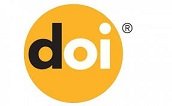Using Video and Written Reflection to Assess Second-Grade Students’ Design Thinking and Conceptual Understanding in an Engineering and Design Challenge
Abstract
The purpose of this mixed methods triangulation convergence study (Creswell & Clark, 2017) was to identify the differences between expressions of understanding through writing versus video reflection in a second-grade science classroom. Specifically, we analyzed the reflective piece of the design thinking of the engineering and design process by focusing on the empathy and ideate themes of the d.school (2013) engineering and design thinking rubric. A total of 76 second grade science students participated in the study either through Flipgrid, video reflection, or written reflection. Results show that there were far fewer instances of empathy as opposed to ideate in both written and video responses. Additionally, there were far fewer instances of both present in the written responses compared to the video responses. Given that providing opportunities for students to engage in the inquiry-based learning of science with empathy may increase their capacity to learn science (Garner et al., 2017), learning how to effectively teach empathy could be beneficial in the teaching and learning of science.
Keywords
Full Text:
PDFReferences
Gaston, J. P., Guffey-McCorrison, S. K., & Rand, A. D. (2023). Using video and written reflection to assess second-grade students’ design thinking and conceptual understanding in an engineering and design challenge. International Journal of Education in Mathematics, Science, and Technology (IJEMST), 11(4), 820-843. https://doi.org/10.46328/ijemst.2746
DOI: https://doi.org/10.46328/ijemst.2746
Refbacks
- There are currently no refbacks.
Copyright (c) 2023 International Journal of Education in Mathematics, Science and Technology








This work is licensed under a Creative Commons Attribution-NonCommercial-ShareAlike 4.0 International License.
ISSN: 2147-611X (Online)
